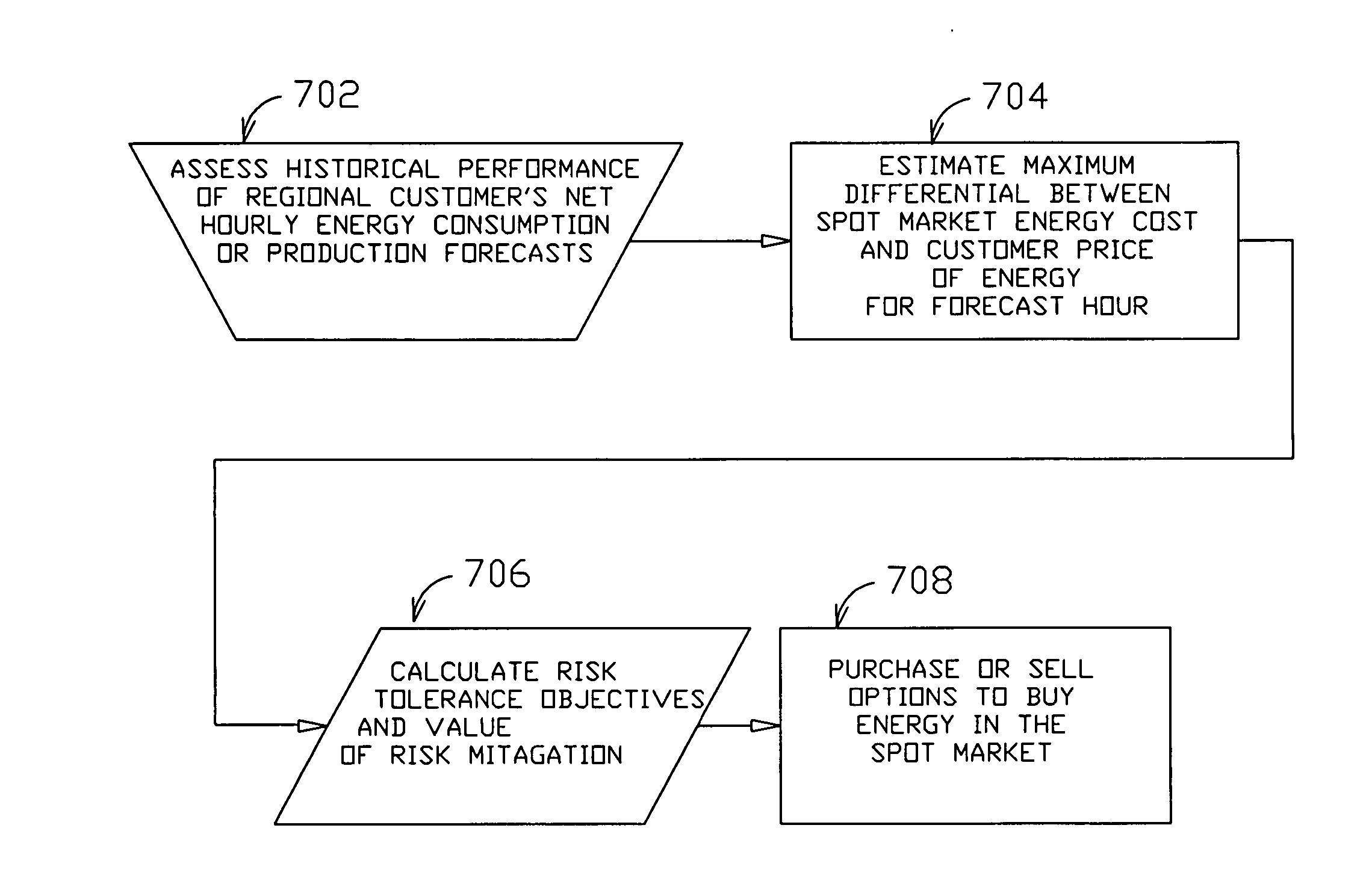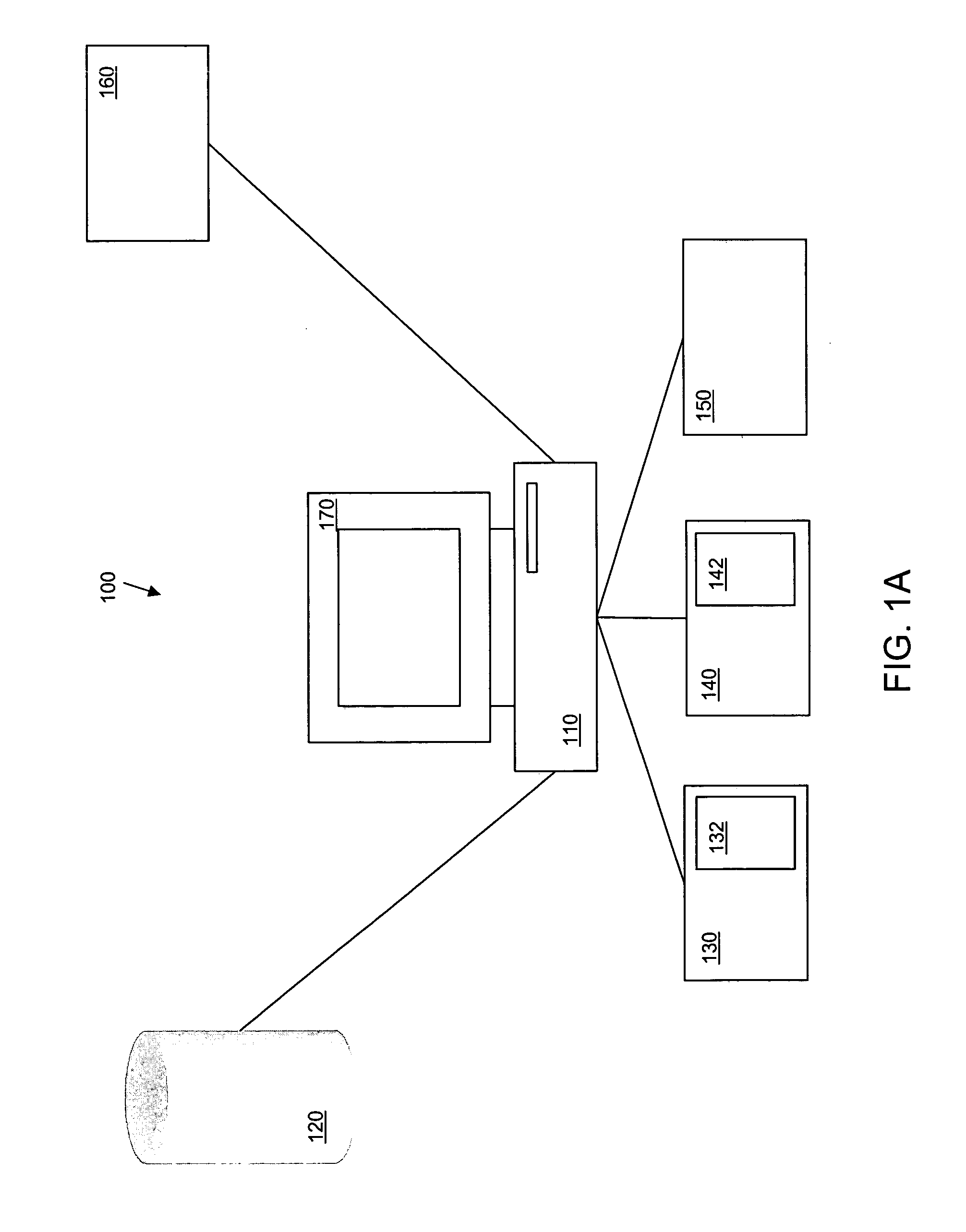Method and system for predicting solar energy production
a solar energy and production method technology, applied in the direction of load forecast in the ac network, light radiation electric generator, instruments, etc., can solve the problems of fundamental intermittent solar energy, generally not considered to be predictable, presenting a serious management challenge to the stability, security and reliability of the grid, and potentially disruptive to the associated wholesale electrical energy mark
- Summary
- Abstract
- Description
- Claims
- Application Information
AI Technical Summary
Benefits of technology
Problems solved by technology
Method used
Image
Examples
Embodiment Construction
[0025] A description of preferred embodiments of the invention follows.
[0026] In general as shown in FIG. 1A, one embodiment of the present invention provides a system 100 for predicting electrical energy output for a solar electric generating system (solar generator), a week in advance, in one-hour intervals. The solar generating system can be any type of solar generating system known in the art, such as a photovoltaic generation system. The system 100 includes a processor 110, a database 120, a weather data module 130, a solar irradiance data module 140, a solar electric generating system characterization module 150, a connection to an outside weather service provider 160, and an output device 170. The database module 120, the weather data module 130, the solar irradiance data module 140, and the solar electric generating system characterization module 150 described further herein. The connection to an outside weather service provider 160 can be the internet, direct dial-up or an...
PUM
 Login to View More
Login to View More Abstract
Description
Claims
Application Information
 Login to View More
Login to View More - R&D
- Intellectual Property
- Life Sciences
- Materials
- Tech Scout
- Unparalleled Data Quality
- Higher Quality Content
- 60% Fewer Hallucinations
Browse by: Latest US Patents, China's latest patents, Technical Efficacy Thesaurus, Application Domain, Technology Topic, Popular Technical Reports.
© 2025 PatSnap. All rights reserved.Legal|Privacy policy|Modern Slavery Act Transparency Statement|Sitemap|About US| Contact US: help@patsnap.com



